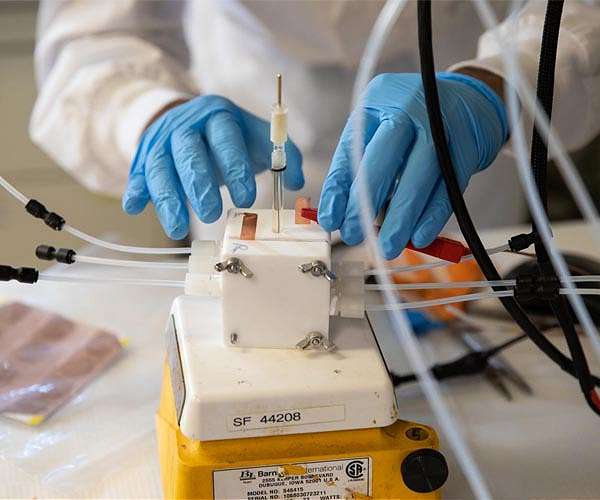University of Michigan develops efficient system for converting CO2 into ethylene
Researchers at the University of Michigan have made significant progress toward creating sustainable fuels by developing an artificial photosynthesis system that efficiently chains carbon atoms together. The system is capable of converting carbon dioxide into ethylene, a critical hydrocarbon used in plastics, with industry-leading efficiency, yield and longevity.
“The performance, or the activity and stability, is about five to six times better than what is typically reported for solar energy or light-driven carbon dioxide reduction to ethylene,” said Zetian Mi, professor of electrical and computer engineering at the university. of Michigan and the corresponding author of the study, which was published in “Nature Synthesis.”
Ethylene, the most widely produced organic compound in the world, is traditionally made using oil and gas under high temperatures and pressure – processes that contribute significantly to carbon dioxide emissions. Using this new photosynthetic system it may become possible to produce ethylene without increasing CO2 levels in the atmosphere.
The research team’s long-term goal is to develop a process that chains more carbon and hydrogen atoms together, potentially leading to the creation of liquid fuels, which are easier to transport and could support sustainable energy solutions.
The device created by the Michigan team uses two types of semiconductors: a base layer of silicon with gallium nitride nanowires on top. These nanowires, each just 50 nanometers wide, are studded with copper clusters that catalyze the conversion of water and carbon dioxide into ethylene.
When exposed to light, the semiconductors generate electrons that break down water molecules and produce hydrogen for the reaction. The copper clusters then facilitate the bonding of carbon atoms from carbon dioxide to carbon monoxide, ultimately leading to the formation of ethylene.
The device stands out not only for its efficiency, but also for its durability. While previous systems lasted only a few hours, the Michigan team’s device ran for 116 hours continuously without any performance loss. Some previous iterations have run up to 3,000 hours. This long life is attributed to the synergistic effects between gallium nitride and the water splitting process, which leads to self-healing of the catalyst over time.
Looking ahead, the research team plans to explore ways to expand the process to create other multi-carbon compounds, including propanol, as they work toward the ultimate goal of producing sustainable liquid fuels.
“In the future, we want to produce some other multicarbon compounds, such as three-carbon propanol or liquid products,” said Bingxing Zhang, assistant researcher at UM and first author of the paper.
Research report:Interfacial coupled Cu cluster/GaN photocathode for efficient CO2 to ethylene conversion


